Program/ Invited Speech/ Industrial Exhibition
The technical program can download from here.Simplified Program - Detailed Program
September 5 (Sun.)
Registration and Welcome Reception
September 6 (Mon.)
Opening Address and Plenary Lecture
Technical Session Oral
September 7 (Tue.)
Plenary Lecture
Technical Session Oral/ Poster
Conference Banquet
September 8 (Wed.)
Technical Session Oral
September 9 (Thu.)
Technical visit
September 6 (Mon.) - 8 (Wed.) Industrial Exhibition
Plenary Lecture
Prof. Dr.-Ing. Dr. h.c. mult. Prof. h.c. mult. Tilo Pfeifer
"In-Line Measurement of Micro-Geometries with Confocal Microscopy"
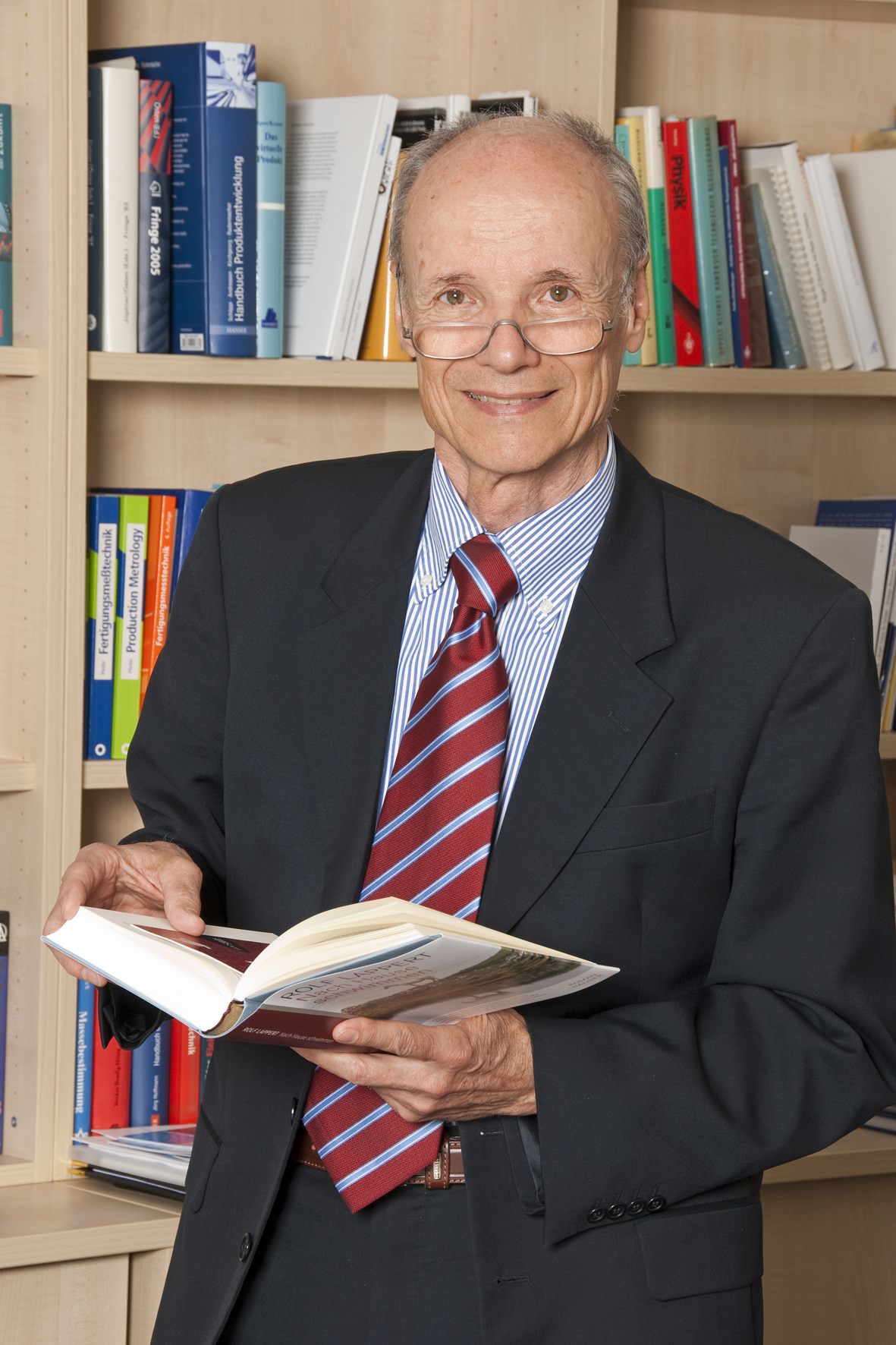
Prof. em. Dr.-Ing. Dr. h. c. Prof. h. c. Tilo Pfeifer
, born 1939, received his Dipl.-Ing. degree 1965 his Dr.-Ing. degree 1968 and his postdoctoral lecture qualification (Habilitation) 1972 form the RWTH Aachen University, Germany.
1972 - 2004 he has been Professor and Director of WZL department “Metrology and Quality Management E RWTH Aachen University and from 1980 - 2004 Director at the Fraunhofer-Institute of Production Technology IPT, Aachen. He is now Professor Emeritus at RWTH Aachen University. Still he teaches graduate courses in “Metrology for Microsystems Eat several Universities (e.g. RWTH Aachen University; Tsinghua University, Beijing; State University of Santa Catarina, Florianopolis, Brazil). His research topics are Optical-/Laser-Metrology and Quality Management.
Prof. Pfeifer received several awards e.g. Distinguished Service Award of IMEKO 1985, degree of Honory Doctor form Universidade Federal Santa Catarina, Brazil, 1989 and from University of Zaragoza, Spain 2003, Degree of Honory Professor from Tsinghua University, Beijing 1995 and from Jilian University, Hangzhou, China 2006, Herward-Opitz Gold Medal of Honour from the VDI association, Germany 2004.
Since 1973 Prof. Pfeifer is member of the General Council of IMEKO.
He is Academician of the International Academy of Quality (IAQ) and Academician of the International Academy of Production Engeneering(CIRP), member of the executive board of Federation for Quality (FQS), Germany and Chairman of the Scientific Council of the German Association for Quality (DGQ).
Prof. Pfeifer has published some 500 scientific papers, generally on laser-/optical measurement, coordinate measuring technology and quality management, numerous conference proceedings, several books and patents.
Abstract
In recent years portability and versatility have become more and more important, resulting in the demand for smaller, multifunctional, and more complex products. Tool manufacturing for mass-production of micro-components, such as in micro-injection requires often hard-to-machine workpiece materials machined very precisely in three-dimensional forms in the micron range. For the fabrication of complex three-dimensional moulds using very tough materials, micro- electro-discharge machining (micro-EDM) is one of the alternative machining processes that can be used successfully. With Micro-EDM-Technology almost every conductive material, regardless of its hardness can be manufactured.
A weak point in the manufacturing of micro-parts using the Wire Electro Discharge Machining (W-EDM) is their in process quality assurance capability. Due to the small size of the produced parts, until now, observation processes have been carried out mainly by taking the machined parts out of the machine tool and doing the inspection in special measuring rooms apart from the production line.
The aim of this work is to introduce an innovative industrial solution by means of optical metrology technology. The goal is to close the quality control loop direct on the machine tool. For this purpose, a white light confocal microscope has been modified and used for in-line inspection in the W-EDM- manufacturing process. Two solutions will be presented:
1) Integration of the confocal microscope into the wire-EDM machine
2) Integration of the confocal microscope to an industrial robot
The first solution is intended for small parts with perpendicular cuts. The second solutions solves the problem of measuring larger parts even if their surface is uneven or if its composed of non perpendicular cuts. The functioning principle of the confocal microscopy is based on the capability of the microscope to optically discriminate different layers on the light reflected from the focused work-piece. This process allows to generate three-dimensional data about the height of the work-piece surface.
Mathematical algorithms have been developed to calculate and graphically display the end contour out of the 3-dimensional measure data. In order to evaluate the nominal geometry, a comparison to the desired-geometry takes place. This was done by programming interfaces which filter the data out of a CAD-CAM application. Deviation of the part end- contour and quality parameters of the machined surface can then be identified directly on the machine tool and, if necessary, corrected by following cutting steps.
Albert Weckenmann (Chair Quality Management and Manufacturing Metrology)
"The role of metrology in the exchange of goods and in the development of manufacturing technologies Ethe background for IMEKO TC 14"
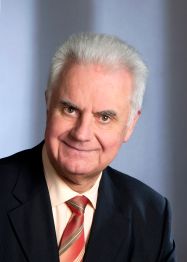
Prof. Dr.-Ing. Dr.-Ing. E.h. Dr. h.c. mult. Albert Weckenmann finished his studies of electrical engineering at the University of Karlsruhe in 1969. He was awarded with the doctoral degree “Dr.-Ing.” by the faculty for electrical engineering of the University of Karlsruhe in 1971. 1972-1975 he worked with Robert Bosch GmbH, Nuremberg, Germany as the head of the group “Predevelopment of New Products”. Just after his industrial experiences, starting from 1975 up to 1992, he worked as Univ.-Professor with the University of Federal Armed Forces Hamburg, Germany, in the field of metrology and precision engineering in the department of mechanical engineering. Since 1992 he has been Univ.-Professor of the University of Erlangen-Nuremberg and head of the Chair “Quality Management and Manufacturing Metrology”.
Prof. Weckenmann, who is an author or co-author of 9 books, published about 400 papers and is the editor or co-editor of 24 books or special issues of journals. He got several awards like the VDI/ETG-Award for a publication on his Dr.-Ing.-Thesis, the Medal of Honor of VDI for prominent achievements in manufacturing metrology 2001, awards of Honorary Doctor from Technical University of Cluj-Napoca, Romania in 2002, from University Bielsko-Biala, Poland in 2006 and also in 2006 from Technical University Ilmenau, Germany.
He has been the organizer or co-organizer, chair or co-chair of several national and international conferences and since 1999 he is the chairman of IMEKO TC 14 (Measurement of geometrical quantities). Additionally; since 2006 Prof. Weckenmann has been a Fellow of CIRP and since 2009 the chairman of STC P (Scientific Technical Committee Precision Engineering) of CIRP.
Main activities in Metrology: Tactile Coordinate Measuring Techniques, Measurement Strategies, Evaluation Procedures and Algorithms, Function Oriented Evaluation, Optical Measurement, Fringe Projection Techniques, Laser Scanning, Measurement Uncertainty Evaluation according GUM.
Main activities in Quality Management: Development of Computer Aided Application of QM Techniques, Virtual Quality Management, Process Chain Oriented QM.
Abstract
For understanding today’s metrology a brief historical review is given, starting with the definition of units for trade and construction of buildings. Later on we needed industrial metrology for development of modern production processes and interchangeable manufacturing. For supporting the international exchange of goods and the development of precise manufacturing processes traceable metrology had to be developed. Global trade as well as international companies profited from the standards to get lower cost for products from all over the world but in addition new measurement techniques had been developed. The firstly defined two point-size-tolerances and measurements with simple measurement devices like calipers got soon insufficient. Due to the improvement of manufacturing processes, better accuracy and increase of global good exchange and increasing demands in economical processes advanced measurement techniques had to be found simultaneously. In the keynote the development from tactile to optical measurement techniques and nowadays also to industrially applied interferometry and computed tomography as well as scanning microscopy measurement methods are shown in parallel with the development of standards. The requirements for today’s manufacturing metrology methods as well as the role of measurement of geometrical quantities in industry and trade are derived and future trends are pointed out.
Ramamoorthy Balakrishnan (Indian Institute of Technology Madras)
"Machine Vision Applications in Metrology"
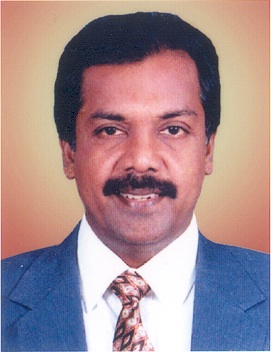
Prof. Ramamoorthy Balakrishnan, Mechanical Engineering, IITMadras, India, Fellow of Metrology Society of India. Visiting Scientist to Ruhr University, Bochum, Germany 1989-90. Visited Erlangen University, Neurenberg, Germany with DAAD Fellowship in 1994 and 1997. He has published more than 170 technical papers. Attended and Presented papers in many national and international conferences. These include two international conferences in USA at New Orleans (1994) and at Detroit (1997), IMEKO XV world congress at Osaka, Japan, 1999, ISMQC 2004 at Neurenberg Germany, ISMTII 2009 at St Petersburg, Russia Organizing Chairman ISMQC 2007 at IITMadras.
His research interests are concerning on Metrology, Comuter aided Inspection, Manufacturing Processes, Electroless, PVD, CVD coated single/multi layer applications.
Abstract
The measurement of roughness on machined surfaces is of great importance on the quality and function of products. Considering the drawbacks in contact approaches, the need and the importance for non-contact techniques becomes apparent. In this approaches, the image of the surfaces are to be captured using a vision system, and then process them digitally for evaluation and quantification. But, in real industrial environments, this approach has several problems such as poor-illumination, depth of focus and image noise. Hence specific procedures are to be developed for pre-processing of surface images to remove unwanted intensity variations that are not attributable to the roughness of the machined surfaces before subsequent analysis. After pre-processing of surface images, the image texture parameters are extracted to identify the type of manufacturing processes and to evaluate the roughness of the machined surfaces. Then the vision roughness is to be quantified using the digital surface images and to be compared with that obtained using the stylus roughness values for validation. Finally, the analysis and the advantages based on the comparison to make sure that the present approach of evaluation of surface roughness based on the digital processed images could be implemented in practice, would be presented.
Richard Leach (National Physical Laboratory)
"A critical review of micro-CMM probing technology"
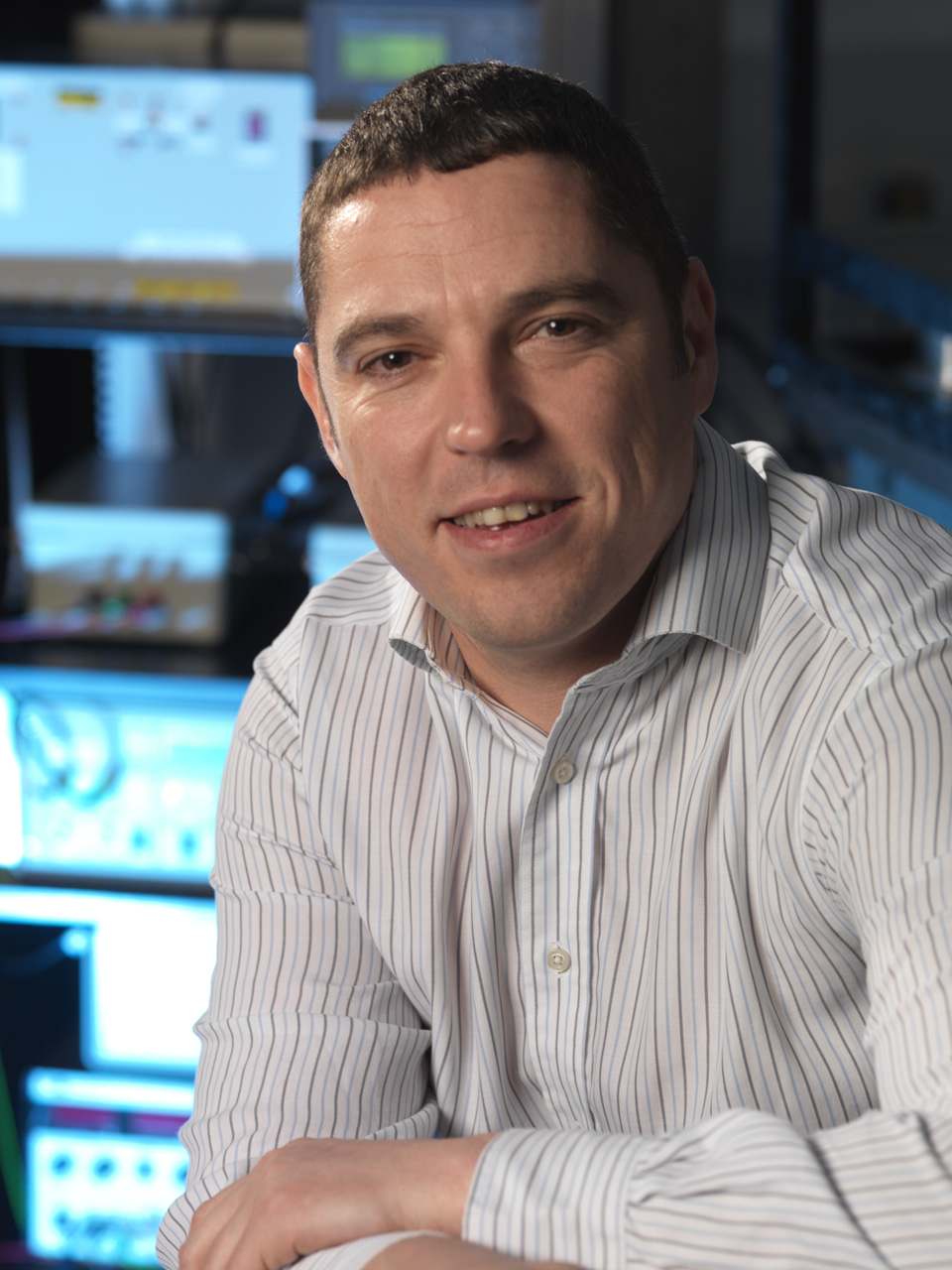
Prof. Richard Leach, recieved his first degree in Applied Physics from Kingston University, followed an MSc in Industrial Measurement Systems at Brunel University and a PhD in surface metrology at University of Warwick. Since 1990 - he has been the National Physical Laboratory, Teddington, UK. He is a visiting Professor of the Wolfson School for Mechanical and Manufacturing Engineering, Loughborough University. He holds the position of Principal Research Scientist in the Mass & Dimensional Group, Industry & Innovation Division. He published over one hundred publications in the area of nanometrology and have recently published a textbook.
He is currently the lead scientist on three BIS National Measurement System Engineering Measurement Programme projects: areal surface texture and structured surfaces metrology, development of low force transfer artefacts and probes for micro-coordinate measuring machines. He is also lead scientist on projects funded by DTI MNT, BIS, EPSRC and EU.
Abstract
Over the past decade there has been a wealth of research into the development of high-accuracy, miniature mechanical probes for micro-co-ordinate measuring machines (micro-CMMs). This research has been driven by the need to measure complex millimetre-to-micrometre scale features on a range of components, for example diesel injectors, small optics and medical devices. The result of this research is that there are now several commercially available micro-CMM probes as well as a number of other probes which are currently under development. The latest research into miniature probes is presented with emphasis on the capabilities and limitations of the probes. A miniature probe being developed at the National Physical Laboratory that addresses many of the limitations of the current commercial probes is also discussed.
Kiyoshi Takamasu (The University of Tokyo)
"Uncertainty estimation for profile measurement by multi-sensors method"
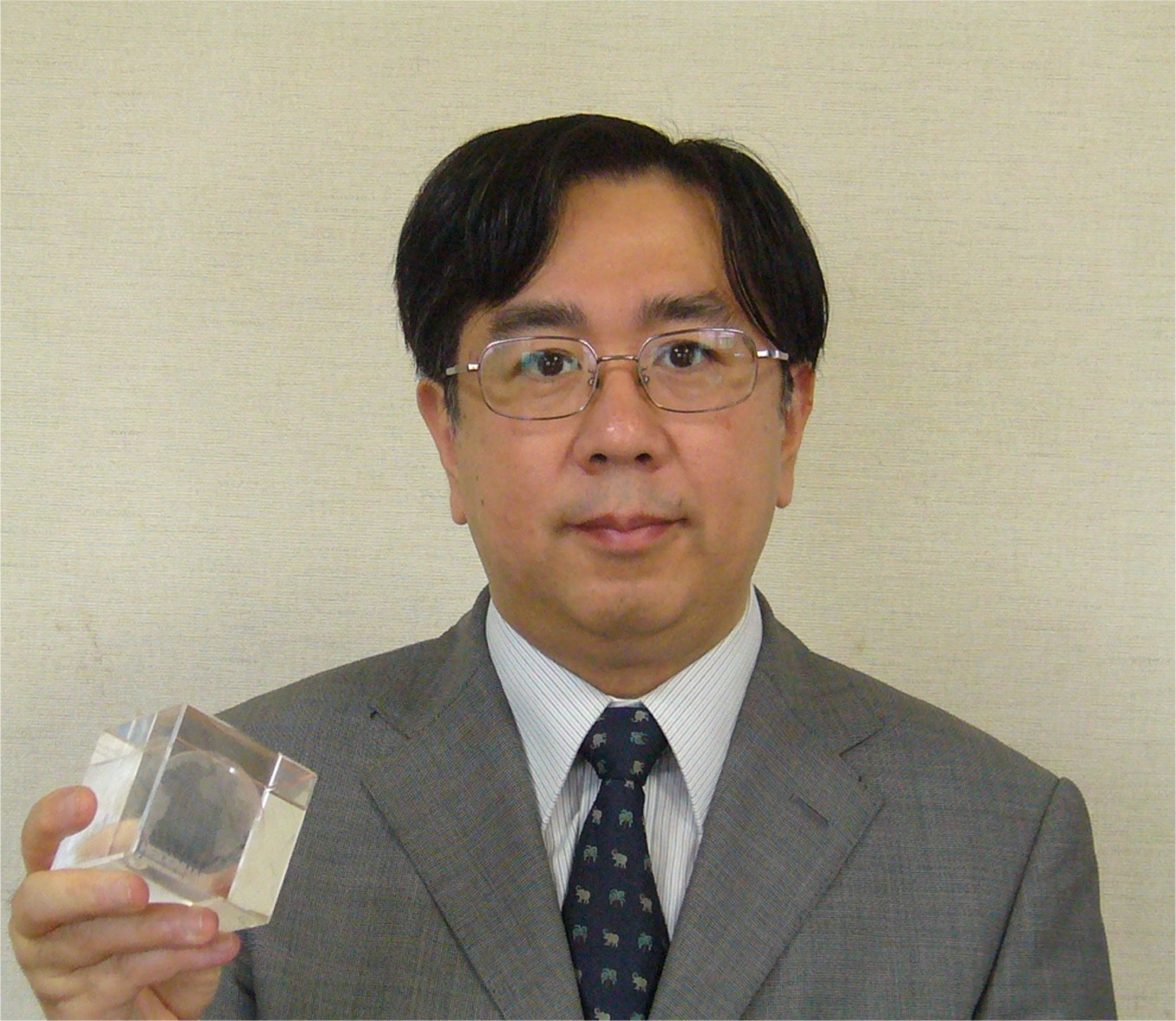
Prof. Dr. Kiyoshi Takamasu, was born and brought up in Tokyo, Japan. He graduated from the University of Tokyo in 1977 and obtained Dr. Engineering in 1982. Then he entered Tokyo Denki University as lecturer and associate professor. He went over to United Kingdom in 1990 as research fellow at Warwick University. In 1992, he came back to the University of Tokyo as associate professor. He is currently in charge of the professor in the Department of Precision Engineering at the University of Tokyo. He is the chairman of the technical committee of intelligent measurement with nanoscale in JSPE (Japanese Society of Precision Engineering)
He is currently interested in Precision metrology, Coordinate metrology, Coordinate Measuring Machine, Kinematic calibration, Uncertainty estimation, Nanometer metrology, Standard and traceability
Abstract
Profile measurement of high precision mirror surfaces is carried out using multi sensor method with 2 or 3 distance sensors and an angle sensor. The uncertainty estimation is key technology to design and evaluate the multi sensor measurement system. In this article, the least squares calculation is applied on the multi sensor method and the error propagation of the least squares calculation is theoretically analyzed. The calculation procedure of the uncertainty estimation of the multi sensor method is theoretically defined. Then, we apply the uncertainty estimation procedure for two applications such as a multi cantilever AFM and a two dimensional linear motor stage. Using the multi cantilever AFM system, profile of resist surface is measured in wide area with nanometer accuracy. The experimental results and the uncertainty analysis of profile measurements are demonstrated for the multi cantilever AFM system. The two dimensional linear motor stage consists of a Sawyer type motor, two bar mirrors and three laser interferometers to control the position of the stage. The profiles of the bar mirrors are measured and the uncertainty of the profile measurement is estimated for high accurate position control of the stage.
Keynote Speech
Ryszard Jablonski (Warsaw University of Technology)
"Analytical method of calculating the measurement accuracy"
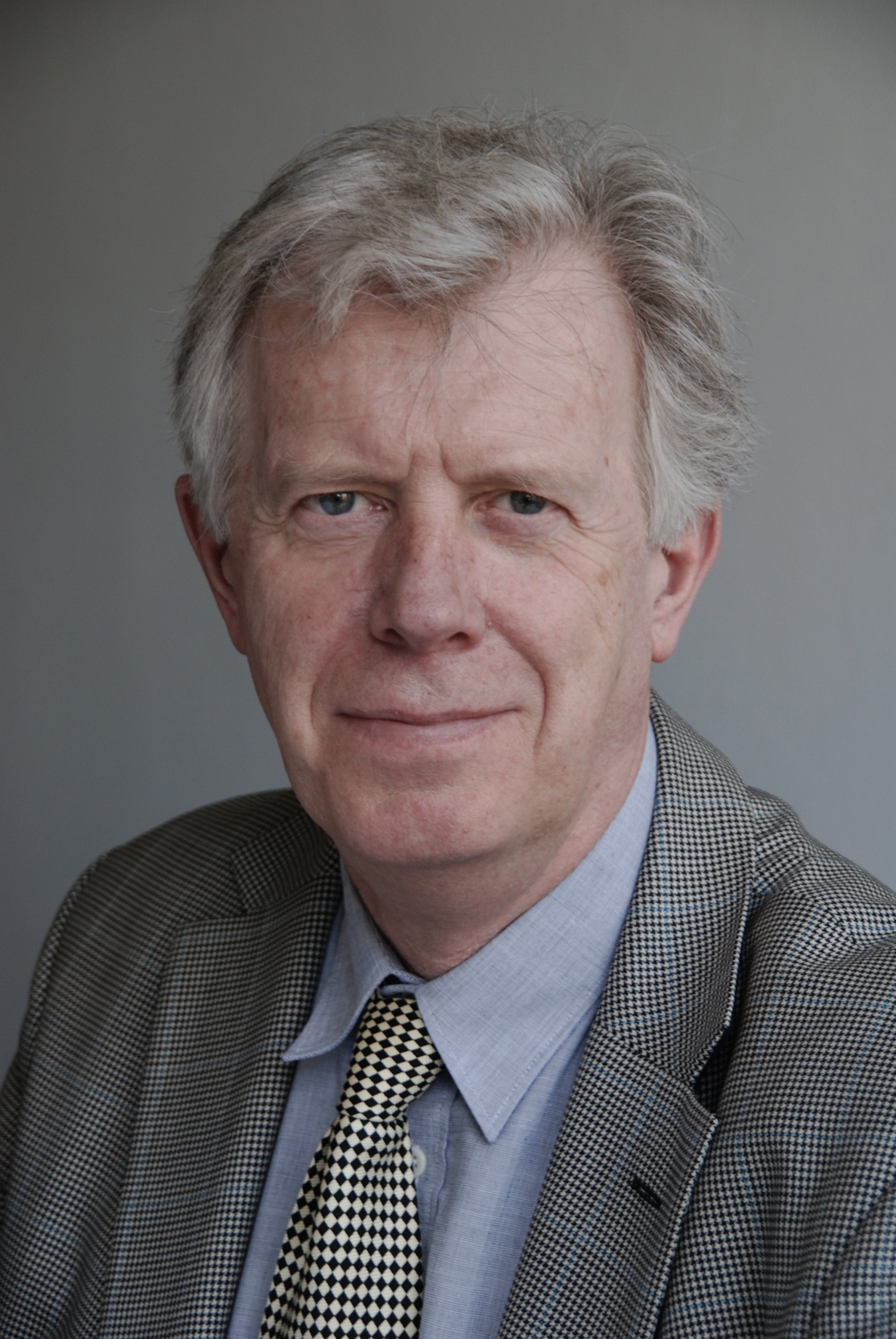
Prof. Ryszard Jablonski, is professor of Warsaw University of Technology (WUT) and Shizuoka University (Japan), received Ph.D. degree and Habilitation in ”laser applications in measurements E in 1975 and 1992 respectively. Permanently working at Warsaw University of Technology at various positions; V-Dean of The Faculty of Mechatronics (1993), head of Division of Sensors and Measuring Instruments (since 1998) and head of Multimedial Techniques School (since 2000). During scientific scholarships and sabbatical leaves he worked at Tokyo Institute of Technology (1970-1972), Research Laboratory for Precision Machinery and Electronics, Japan (1979-1980), Rank Taylor Hobson, UK (1992), Shizuoka University (1994-1997).
His research interests includes photon beam applications in nanometrology, sensors and subtle measurements in mechatronics, and boundary effects referring to elementary particles, including special light effects.
He was the chair of several international conferences on Measurement Technology and Intelligent Instruments (Hungary, China, Japan, Egipt), Laser Metrology IMECO (Austria, Japan, Germany). Initiator and organizer of Int. Conf. Mechatronics 1997, 2000, 2004, 2007 and Inter-Academia 2005, 2009. Since 1990 he is in a board of International Committee on Measurement and Instrumentation and also International Measurement Confederation TC14. He has supervised many projects of Polish Committee of Scientific Research, Polish Ministry of Education and bilateral projects with foreign universities and companies. Initiator of Double Doctor (Degree) Program successfully realized bwtween Polish and Japanese universities. He is the author and co-author of 7 books 227 papers and 14 papents.
Hideki Ina (Canon Inc.)
"FOCUS AND DOSE CONTROL FOR LITHOGRAPHY OF SEMICONDUCTOR MANUFACTURING USING MANY KIND MEASUREMENT TOOLS RESPECTIVELY"
Dr. Hideki Ina has obtained his master degree in applied physics in 1981 (Japan, the University of Erectro-Comunication) with moire topography using Fourier transform technology. Since then, he has been working with CANON Inc. He used to be optical designer and has designed many alignment systems for all aligner, stepper and scanner. Now he is with Nanotechnology Development Centers, CanonInc. He is currently working on the development of new meteorology system for NGL's exposure tool and the inspection system. He has obtained his doctor degree in applied physics in 2007.
His research interests includes Lithography, Metrology, Optical Measurement system, AFM, Signal processing, Nanotechnology.
Abstract
The semiconductor design rule has always been shrinking and its pattern line width is 36-45 nm for semiconductor high volume manufacturing nowadays. Critical dimension (CD) control accuracy is required within 10% or less of the design rule. That means the control accuracy should be made within 3.7 nm for the 36 nm half pitch device. To respond to this shrinkage requirement, semiconductor exposure tools, such as steppers and scanners that have a high numerical aperture (NA) and projection optics for a shorter exposure wavelength, have continuously been developed. Since NA is high, the depth of focus (DOF) on a wafer is
several hundred nanometer or less under the present condition, therefore several ten nanometer focus control, approximately 10% of DOF, is required in lithography. However, analyses of the focus measurement degradation factors with
process wafers have hardly been performed. This is because the estimation method to determine the deviations from the optimum focus and exposure dose, has not been established using volume production wafers that are exposed under one focus and dose condition.
Seung-Woo KIM (Korea Advanced Institute of Science and Technology (KAIST))
"Ultrafast Optics for Ultraprecision Length Measurement"
Prof. Seung-Woo KIM obtained his bachelor degree in mechanical design from Seoul National University in 1978. Then he entered the Korea Advanced Institute of Science and Technology (KAIST) and received MSc degree in mechanical engineering in 1980. He went over to United Kingdom in 1981 for further study and obtained PhD in precision machine system design from Cranfield University in 1984. He came back to Korea and started his carrier by joining the KAIST as a faculty member. Since 1985 he has been working as assistant, associate, and full-professor in the Department of Mechanical Engineering at KAIST. He is currently in charge of the graduate research group of Precision Engineering & Metrology, and acting as director of the KAIST Institute of Optical Science & Technology.
His research interest includes ultrafast optics for ultraprecision science, high precision machine design, optical interferometry for dimensional metrology, and opto-mechatronics systems synthesis. He is currently involved in an important national creative research initiative project for the development of next generation precision engineering key technologies using ultrafast optics. He is a member of SPIE, OSA, euspen and ASPE.
Abstract
Emerging possibilities of exploiting ultrashort femtosecond pulse lasers as new light sources for diverse fields of measurement science and technology are first addressed. Emphasis is focused on the recent development made in the particular field of optical time/frequency measurement using the frequency comb of a femtosecond laser as the precision frequency ruler stabilized to the standard atomic clock. Then explained is how the enhanced capability of optical frequency measurement leads to the advance in length measurement by constructing optical frequency generators providing any optical signals on demand for the advanced optical interferometry of absolute distance measurements. Another approach of absolute distance measurement is introduced which attempts to measure the time-of-flight of light in free space by timing femtosecond pulses using a second harmonic crystal. Finally, a new method of high harmonic generation using a femtosecond laser is discussed with the intention of extending the operating range of the frequency comb to the EUV and soft X-ray regime with potential of improving the measuring capability beyond the visible range of light.
Sarwat Zaki Ahmed ZAHWI (National Institute for Standards of Egypt)
"CALIBRATION OF SURFACE PLATES USING AUTOCOLLIMATOR, LASER SYSTEMS AND COORDINATE MEASURING MACHINES (CMMs)"
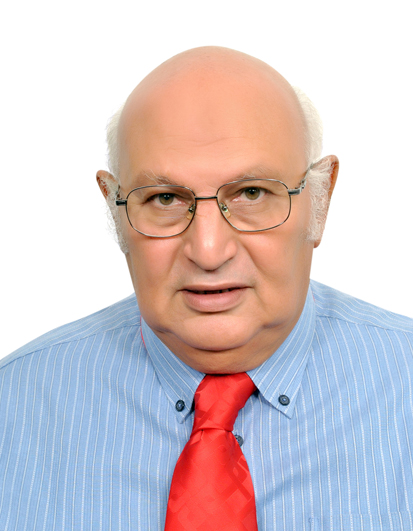
Prof. Dr. Sarwat Zaki Ahmed ZAHWI obtained his bachelor degree in mechanical engineering for production engineering from Cairo University in 1966. Then he obtained his master degree in mechanical engineering from Azhar University in 1972. He obtained PhD in production engineering from Alexandria University in 1978. From 1967 to 1998 he joined the research team NIS. He was the head of the division of Mechanical, Force and Optical Metrology at NIS in 1998. From 1998 to 2001 he was Elected President of ICMI. He was president and chairman of NIS Egyptian in 2003. He is now Emeritus Professor at National Institute of standards, NIS. He is a member of TC 14, IMEKO. Prof. Zahwi reveived “Life-Time Award Efrom the International Committee for Measurements and Instrumentation, ICMI, during ISMTII 2006 conference, Japan.
His research interest includes in the field of dimensional metrology, surface metrology, flatness measurements, pneumatic measurements, flow measurements, volume measurements, gauging.
Abstract
Calibration of granite surface tables could be performed using autocollimators, laser systems or coordinate measuring machine (CMM). In this investigation a comparison among these methods of calibration has been carried out. An Elcomat 3000 autocollimator of resolution 0.05 arc second, an Agilant 5529A laser interferometer system of resolution 0.05 arc second & a Zeiss/Prismo CMM are used. Large reflector mirror, angular retro reflector & Sensitive probe is used with autocollimator, laser systems& CMM to identify heights at each position on surface tables. Repeated results from the different methods are carried out and presented in the paper. Uncertainties associated with the measurement results of each method have been estimated using the GUM procedures and given in the paper. The paper discusses the difficults and ease as well as accuracies associated with each method.
Yongsheng Gao (Hong Kong University of Science and Technology)
"In-Process Form Profile Measurement for Precision Control in Manufacturing"
Prof. Yongsheng Gao received his PhD degree in 1992 from the University of Birmingham. He has been focusing his research work in precision machining and measurement, in particular, abrasive machining and in-process form profile measurement, which are important areas of precision engineering. He has published more than 200 journal and conference papers. Prof. Gao is the general secretary of ICMI (The International Committee on Measurements and Instrumentation) and is the person who founded ICAT (The International Committee for Abrasive Technology) in 2002. Through ICMI and ICAT, Prof. Gao involved in many activities in the areas of abrasive technology and precision measurement. For Prof. Gao, it is a great honor to be able to work with many key researchers around the world through the ICAT and ICMI platforms.
His recent research interests include CNT based tools for nano machining, variable strength active cooling and activation for precision machining, in-process form profile optical measurement under coolant and vibration conditions.
Abstract
Performance of machine systems, which are to realize a set of design objectives, depends on the quality of the parts, which in turn depends on the precision in manufacturing. A manufacturing process can be very complex as many factors are involved affecting the part precision. As demands for performance are increasing to be more competitive, manufacturing processes are becoming more complex and factors affecting precision can be time varying. This will require active control and in-process measurements are necessary in order to provide feedback for precision and productivity. Variables for in-process measurement include machine state variables such as force and part quality variables such as roughness and form error. In this study, types of in-process measurements and difficulties of the measurements are examined and methods for in-process measurement are reviewed. Recent progress in methods for in-process optical measurement of part form profile under coolant and vibration conditions is reported.
Klaus-Dieter Sommer(Physikalisch-Technische Bundesanstalt (PTB))
"Modelling of Measurements for Measurement Data and Uncertainty Evaluation"
Prof. Dr. Klaus-Dieter Sommer
- University of Magdeburg, Subjects: Electrical Engineering, Automatic Control,
- Ilmenau Technical University, Subject: Measurement Techniques
Current employments:
- Head of PTB Division 3 “Chemical Physics and Explosion Protection”
- Honorary Professor for Measurement Techniques of the University of Erlangen-Nuremberg
- Guest lecturer of the Braunschweig Technical University
Memberships and chairs:
- Chair of IMEKO TC 20 Energy Measurement
- Vice-President of EURO-ASIAN Cooperation of National Metrological
Institutions COOMET
- Chairman of the Technical Committees Foundations of Measuring Systems and
Measurement Uncertainty of the German Society for Measurement and Automation GMA
- Elected Member of the Advisory Board of the German Society for Measurement
and Automatic Control GMA
Awards:
2004: Best Best-Paper Award of the Measurement Science Conference 2004, Anaheim (USA)
Research Interest
Measurement theory, Basics of measurement systems, Modelling of measurement system, Measurement data and uncertainty analysis, Precision measurement of thermophysical properties, Energy measurement and standards, Measurement of climate variables including atmospheric and oceanic parameters
Abstract
For measurement data evaluation it is necessary to have both, a basic idea on how the measurement process assigns values to the measurand(s) and knowledge about the relevant influencing quantities of the measuring process. The incomplete knowledge about quantities and parameters is described by appropriate state-of-knowledge probability density functions. Establishing a mathematical model of the interrelation of the influencing quantities is more difficult; it requires to understanding the measurement process.
Especially in measurement, the cause-effect approach is the most commonly used and comprehensible methodology for the representation of basic relationships. But for measurement data and uncertainty evaluation, usually an ‘inverse model’ is needed that establishes the relationship between the measurand(s) and all relevant influencing quantities, parameters and indication(s).
For practical modelling, based on an analysis of the propagation of the measurement signal(s) from cause to effect and the decomposition the real measurement into its functional elements, the paper describes a systematic procedure for establishing a model equation for evaluating measurements. The following problems and their impact on the measurement uncertainty are emphasized:
- Non-linearity and linearization
- Modelling of correlation.
- Approaches to describing non-linear relationships.
- Description of time-variant measuring systems.
